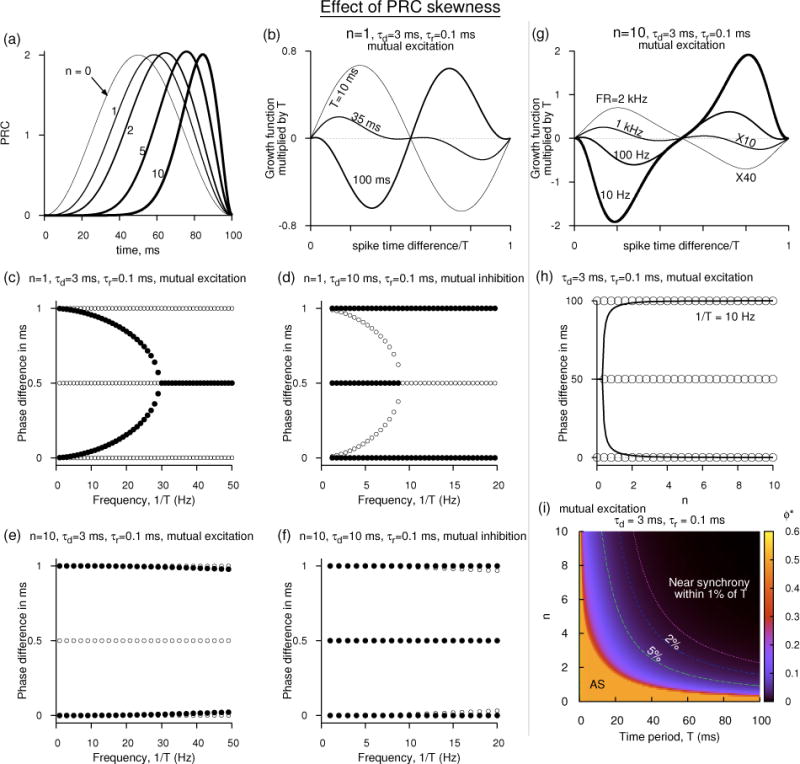Figure 10.

Effect of PRC skewness on synchrony. (a) PRC shapes given by Eq. 39 as n is increased. (b) The growth function for two mutually excitatory neurons getting affected by the period and in particular the antisynchrony becoming unstable as T is increased even when the PRC has a small skewness. (c) Change of stability of synchrony, antisynchrony, and the non-zero phase-locked states with the rate for excitatory network when n = 1. (d) Same as in (c) for inhibitory network. (e,f) Similar to (c) and (d) but for large skewness (n = 10), depicting only the movement at low rates. In (e) the non-zero phase-locked state is in close proximity to the unstable synchronous state (which is weakly repelling) at low rates making it a near-synchronous state. (g) The growth functions for excitatory network revealing the non-zero phase locked state surging toward the synchronous state as the rate is lowered at large skewness (n = 10). (h) Movement of steady states of the excitatory network as the skewness is increased at 10 Hz. (i) Steady states displayed in n vs. T space for the excitatory network.
